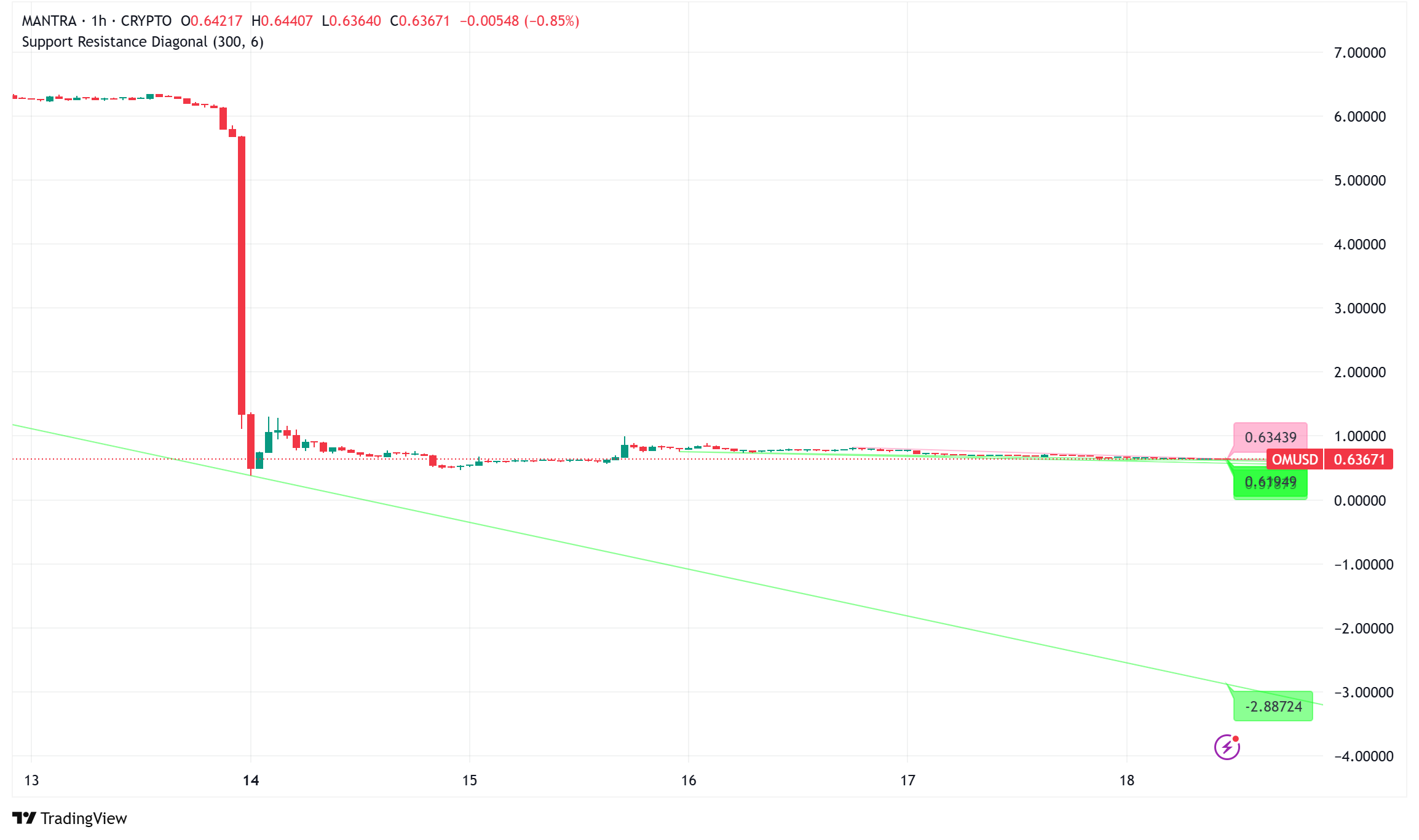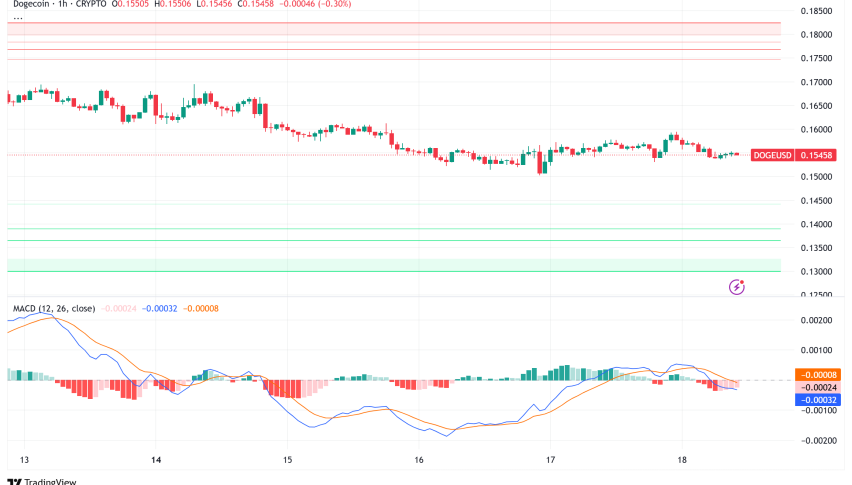Mantra (OM) Price Struggles Below $0.70 as Chaos of 90% Collapse Lingers
Mantra's OM token is currently hovering above $0.64, down by over 8.5% in the past 24 hours, as the project continues to grapple with the

Quick overview
- Mantra's OM token has dropped over 8.5% to around $0.64 after a catastrophic collapse that saw its value plummet by more than 90% in just hours.
- The crash was triggered by a single trader's manipulation, leading to speculation of insider trading and market manipulation.
- Industry analysts believe Mantra may have inflated its token liquidity numbers, raising concerns about the integrity of its market activity.
- Despite plans for a token buyback and burn program, uncertainty remains about Mantra's recovery and future reputation in the crypto space.
Mantra’s OM token is currently hovering above $0.64, down by over 8.5% in the past 24 hours, as the project continues to grapple with the aftermath of what many are calling one of 2025’s most spectacular crypto collapses. The token, which was trading at around $6.30 just days ago, saw its value plummet by more than 90% on April 13, erasing approximately $5.5 billion in market capitalization in a matter of hours.

Mantra (OM) Token Collapse: The 24-Hour Timeline of Destruction
The disaster started on April 13 between 18:00 and 20:00 UTC when OM’s price dropped from $5.52 to as low as $0.52 without notice. Social media burst with hypotheses ranging from exchange manipulation to rug pull claims.
Mantra CEO John Patrick Mullin said in a statement as fear grew that “reckless forced closures initiated by centralized exchanges on OM account holders” caused the catastrophe. Mullin highlighted especially at the timing—during low-liquidity hours on a Sunday evening—pointing to “a degree of negligence at least, or possibly intentional market positioning taken by centralized exchanges.”
OM’s On-Chain Analysis Points to Single Trader Manipulation
New blockchain research points to one trader perhaps controlling the crash. Reports state that the first trigger was probably a $1 million short bet on Binance perpetuals market, resulting in more than 5% of slippage “in literal microseconds”. This trader apparently kept dumping short positions five-second intervals, triggering a chain reaction on other exchanges.
Blockchain tracker Lookonchain then found 17 accounts where 43.6 million OM tokens—worth about $227 million—had been put into Binance and OKX before to the crash, so fuelling insider trading speculation.
Mantra’s Liquidity Illusion Exposed
Industry analysts now believe that Mantra and related market builders might have inflated OM token liquidity numbers by using weaknesses in the self-reporting systems of data aggregators. “This was a token that appeared to be a top-25 asset by market capitalization despite less than 1% of the token supply being genuinely liquid,” said on-chain observers based on conversations on “The Chopping Block” podcast.
“This involved misrepresenting circulating supply and trading volume to create the appearance of broader market activity.” Presumably, the artificially kept liquidity fell apart when a big holder tried to sell.
Early Warning Signs Ignored
Three days before the disaster, hedgeye digital assets specialist Ishmael Asad forewarned OM about vulnerabilities. Asad noted how Mantra had silently quadrupled its token supply after switching from Ethereum to its own L1 chain, pointing out worrisome tokenomics as far as November 2024.
“They literally doubled the supply,” Asad told Coinage in a post-crash interview. “And out of that new supply… they kept a major chunk of that as well for core contributors, seed funding and ecosystem development grants.”
The Mantra community as well as Mullin greeted Asad’s warnings with contempt. “I was definitely caught off guard by the hahas in front of all of his responses and sort of just the sheer arrogance,” Asad added.
Mantra (OM) Recovery Plans Unclear
Since then, Mantra has released a “statement of events,” stressing once more that all team allocation remain frozen and that no project-led token sales had place. Although the team has stated intentions for a token buyback and burn program, they have given scant information on timing or execution.
Starting with his personal allotment, Mullin said he would burn all of his team’s tokens. Additionally allegedly involved in the initiative is an unidentified blockchain analyst looking at the fundamental reason of the disaster.
Industry Implications and Proposed Solutions
The OM fall has spurred fresh debate on the flimsiness of crypto assets with artificially created liquidity. Particularly with regard to token concentration and opaque governance, Bitget CEO Gracy Chen pointed out that the meltdown “exposed several critical issues” inside the sector.
Industry leaders have suggested many ways to stop similar events, including mandating disclosure of all market-making agreements as a prerequisite for listing tokens on main exchanges and applying increased scrutiny of token distribution claims.
Many observers remain dubious about Mantra’s chances for recovery even as it seeks to rebuild reputation. Asad stated, “I personally would stay away from this one because of permanent reputation damage,” then added, “maybe at this current price it’s more fitting to what’s actually happening on the chain.” That $9 valuation, though? That was [too soon] and it was not justified.
- Check out our free forex signals
- Follow the top economic events on FX Leaders economic calendar
- Trade better, discover more Forex Trading Strategies
- Open a FREE Trading Account



